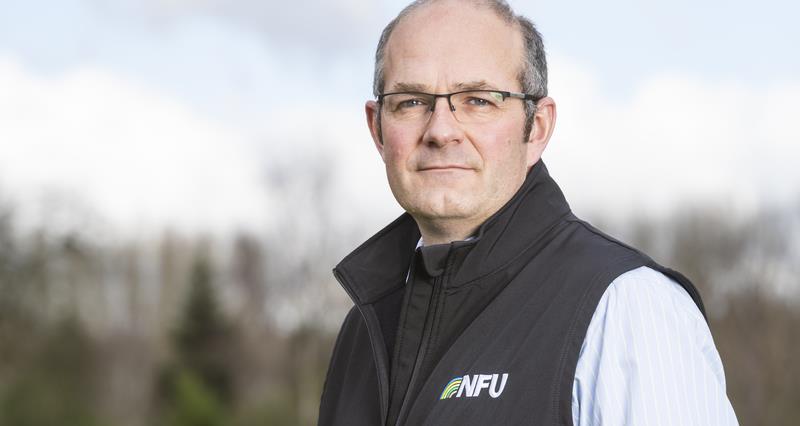Published as part of ŌĆō which measure the total profit from all UK farming businesses during the past calendar year ŌĆō this drop translates to a fall of ┬Ż1.1 billion from 2022 giving an overall total income of ┬Ż4.5 billion for England.
The fall follows a spike in 2022 figures, driven by high global costs pushing up commodity prices following the war in Ukraine.
FarmingŌĆÖs overall contribution to EnglandŌĆÖs economy also fell by ┬Ż1bn or 8.7% compared with 2022.
Income from diversification saw a small increase however, rising from ┬Ż1.321bn to ┬Ż1.393bn.
ŌĆśVolatile environmentŌĆÖ
Responding to the figures, NFU President Tom Bradshaw said the last few years had demonstrated the ŌĆ£volatile environmentŌĆØ in which farmers and growers are trying to make a living.
ŌĆ£We have moved from high commodity prices and soaring production costs in 2022 caused by the tragic situation in Ukraine, to much lower income figures in a weather-affected 2023, as commodity prices fell but production costs remained high,ŌĆØ he said.
Since the survey ended, we have seen record levels of rain and flooding the NFU President added, which has contributed to a ŌĆ£huge drop in confidence among farmers and put a real question mark over this yearŌĆÖs harvestŌĆØ.
ŌĆ£While farmers are well used to dealing with variation year on year, the volatility weŌĆÖve seen in the last few years isnŌĆÖt sustainable.ŌĆØ
NFU President Tom Bradshaw
AHDBŌĆÖs latest planning and variety survey revealed a ŌĆśdramatic declineŌĆÖ in cereals and oilseed rape planted this year, down by 5% in 2024 to the lowest level for over two decades with the total wheat area estimated to be the second smallest since 1981.
Crop and livestock output
According to DefraŌĆÖs figures crop output fell by 13.1% in 2023, with wheat seeing the largest decrease at ┬Ż1.2bn less than in 2022.
ŌĆśLow commodity prices combined with a poor yield resulted in substantial decreases in the value of many crop items,ŌĆØ Defra said.
Both the area and yield of wheat planted in England fell between 2022 and 2023 by 5.3% and 5.6% respectively.
Defra cited an ŌĆśeasing of pricesŌĆÖ in the UK from historic highs in 2022 as contributing to a decline in the value with milling wheat and feed wheat prices down by 13.0% and 21.6% respectively.
In addition, poor weather led to variable wheat quality,ŌĆÖ reducing the percentage of homegrown wheat that could be sold at the highest price categoryŌĆÖ.
Total livestock output in 2023 remained at ┬Ż12.4 billion, with an increase in poultry output of ┬Ż380 million offsetting a ┬Ż353 million decrease in the value of milk.
Costs remain high
DefraŌĆÖs figures showed that the cost of production totalled ┬Ż15bn.
ŌĆśThe value of most intermediate consumption items remained stable with the notable exception of fertiliser, which decreased by ┬Ż337 million following easing of prices on the global market,ŌĆÖ Defra said.
The largest contribution to intermediate consumption was animal feed, Defra said, contributing ┬Ż5,459 million in 2023.
ŌĆ£While farmers are well used to dealing with variation year on year, the volatility weŌĆÖve seen in the last few years isnŌĆÖt sustainable,ŌĆØ Tom added. ŌĆ£Food security is national security, and thatŌĆÖs why we need the new government to be prioritising food production in its policy-making.ŌĆØ



